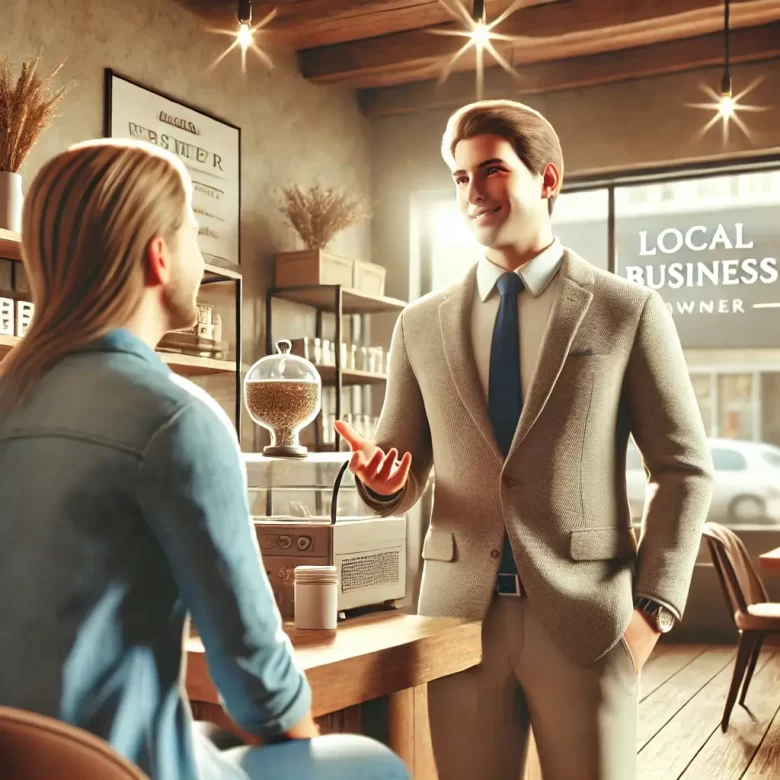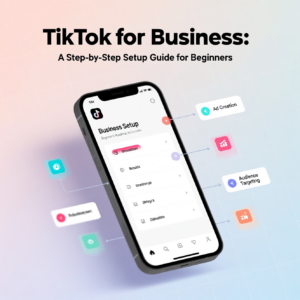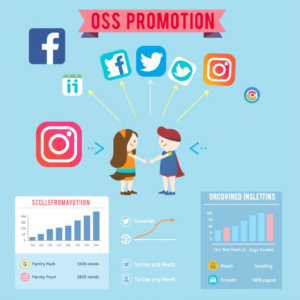Selling is an art, and in any business—especially local ones—overcoming customer objections is essential to closing sales. Objections are those concerns or barriers that customers present before making a purchase decision. They may seem like challenges, but when properly understood and addressed, they become opportunities for you, as a business owner, to build trust and close the deal.
Every customer has doubts, and it’s entirely natural for them to question before deciding to invest in a product or service. However, many local entrepreneurs face objections that make it harder to turn an initial contact into a sale. Whether at a store counter or during a phone negotiation, the key to success lies in effectively breaking down these objections.
In this article, we’ll explore the five main objections local businesses face and provide practical tips on how to overcome them. This way, you’ll be better prepared to guide your customers toward confident purchasing decisions.
1. “The price is too high.”
This is one of the most common objections in any sale, and many customers simply may not see the value in the price presented. When a customer mentions price, they’re often saying they haven’t yet realized all the benefits your product or service offers.
How to Overcome:
- Highlight the value: Instead of focusing on the price, emphasize the benefits the customer will receive. For example, a clothing store could explain that while a piece may cost more, it offers greater durability and comfort.
- Comparisons: Compare your offerings to competitors and explain what makes your product or service unique. For instance, a beauty salon could justify its prices by pointing out its superior-quality products or personalized service.
The focus should be on perceived value. When customers recognize additional benefits, they no longer see price as a barrier.
2. “I need to think about it.”
Many customers hesitate and ask for time to think. This type of objection may be a polite way of saying they’re not yet fully convinced or that they’re considering other options.
How to Overcome:
- Create urgency: Offer a promotion or special condition available for a limited time. For example, a local café could provide a same-day discount for customers who place their orders immediately.
- Address doubts: Gently ask if there’s something specific holding them back from deciding. Often, this question reveals concerns you can directly address.
Show understanding and support, but encourage action to prevent the customer from drifting away from the purchase.
3. “I found it cheaper somewhere else.”
With easy access to the internet, many customers research prices before committing to a purchase. For local businesses, this objection can be even more challenging, as online stores often offer lower prices.
How to Overcome:
- Highlight local value: Emphasize the benefits of buying locally. Remind customers that by purchasing from you, they’re supporting the local economy and receiving personalized service. For example, a local restaurant could highlight the quality of fresh ingredients and the family-oriented service.
- Extra benefits: Offer something competitors can’t, such as post-purchase support, close proximity, or same-day delivery services.
Beyond price, customers often seek trust and relationships. Offer these, and emphasize your business’s strengths.
4. “I’m not sure this will work for me.”
When customers are unsure about the functionality or suitability of a product or service, it often means they’re not convinced of the results. This is common, especially in services like gyms, beauty clinics, or even local consulting firms.
How to Overcome:
- Testimonials and social proof: Share testimonials from other customers who achieved success using your product or service. For instance, a gym could showcase before-and-after photos of clients who lost weight through its programs.
- Practical demonstration: Offer a demo or free sample if possible. For example, a massage therapist could provide a discounted first session to help clients realize the value of the service.
Show how your product or service solves the customer’s problem by using real-life examples.
5. “I don’t trust your company.”
Lack of trust can be a tough objection, especially for new or small businesses where customers aren’t yet familiar. However, trust is something that can be built.
How to Overcome:
- Guarantees: Offer satisfaction or money-back guarantees. This removes the risk for customers and makes them more comfortable. For example, a pizzeria could promise a refund or a new pizza if customers are dissatisfied.
- Online presence: Strengthen your online presence with positive reviews and respond to all feedback, showing that you value customer opinions. Encourage satisfied customers to leave comments on social media or Google.
Transparency and long-term relationships are crucial for overcoming this objection.
6. “I don’t have time for this right now.”
Some customers may genuinely be busy or may use lack of time as an excuse to avoid the purchase. The time issue often masks another concern, such as lack of interest or uncertainty.
How to Overcome:
- Simplify the process: Make the purchase process quick and easy. For example, a beauty salon could allow customers to book appointments via WhatsApp, making their lives more convenient.
- Emphasize convenience: Highlight how your product or service can save time. For instance, a restaurant could promote its fast delivery or takeout options, saving customers the time spent cooking.
Simplifying processes and showcasing convenience can help convert this objection.
7. “I’m happy with my current provider.”
Customers who already have a solution to their problem may hesitate to try something new, even if your offering is superior. Loyalty to their current provider can be an obstacle.
How to Overcome:
- Show the benefits of switching: Demonstrate what your business offers that competitors don’t. For example, an electronics store could highlight free technical assistance that comes with purchases.
- Free trial or sample: Offer a no-commitment way for the customer to try your product or service. For instance, a maintenance service could offer the first visit at a discount or even for free.
Show how switching can be advantageous and risk-free.
8. “I’ve never heard of your company.”
This objection is related to a lack of recognition or brand authority in the market. People often prefer businesses they’re familiar with or that have an established reputation.
How to Overcome:
- Share your story and mission: Explain how your business started and the values you uphold. Local businesses have the advantage of creating a personal connection. For instance, a local café could share its family-run origins and dedication to quality.
- Social proof: Display positive reviews and customer testimonials. A bakery, for example, could showcase local awards or certifications to boost credibility.
Building a narrative around your brand helps establish familiarity and trust.
9. “Now isn’t the right time to buy.”
Customers may say it’s not the right time for a purchase, possibly because they’re waiting for a promotion or don’t consider the purchase a priority.
How to Overcome:
- Flexible payment options: Offer installment plans or discounts for early purchases. For example, a furniture store could provide 12-month interest-free installments, making the purchase more accessible.
- Highlight the urgency: Explain the benefits of acting now, such as future price increases or missed opportunities. A personal trainer, for instance, could stress the importance of starting a fitness program before summer to achieve results in time.
Show the positive impact of acting now instead of waiting.
10. “I need to talk to someone else first.”
Some customers need approval from a partner, boss, or colleague before making a decision. This is common in significant purchases, especially for high-value products or services.
How to Overcome:
- Facilitate group decisions: Provide informational materials that customers can share with the decision-maker. For example, a renovation store could offer a portfolio with photos for the customer to show their family.
- Schedule a follow-up meeting: Offer to meet with the customer and the person they need to consult. For example, a digital marketing consultant could schedule a joint meeting with the client and their partner to explain the proposal details.
Making communication easier with involved parties can speed up the sales process.
Conclusion
Overcoming objections is a natural part of the sales process, especially in local businesses, where customer relationships are closer. By understanding your customers’ concerns and having strategies to address them, you’ll be better equipped to turn doubts into sales.
Remember: every objection is an opportunity to provide more information and strengthen the customer’s trust in your business.
FAQ (Frequently Asked Questions)
- What is a sales objection? A sales objection is any concern or barrier a customer raises before deciding to buy a product or service.
- How can I improve the perceived value of my product? By highlighting the unique benefits and features of your product or service and comparing it with cheaper or lower-quality alternatives.
- What should I do when a customer asks for time to think? Present limited-time offers and gently ask if there’s any doubt or concern you can address right away.
- How do I handle competitors offering lower prices? Emphasize your local value, product or service quality, and unique benefits.
- Are testimonials important for overcoming objections? Yes, testimonials and social proof effectively demonstrate that your product or service is reliable and delivers results.
- What’s the best way to build trust with new customers? Offer guarantees, maintain a strong and transparent online presence, and provide personalized, high-quality service.
- Can all customer objections be overcome? Not always, but with empathy, active listening, and creative solutions, many objections can be addressed or mitigated.



